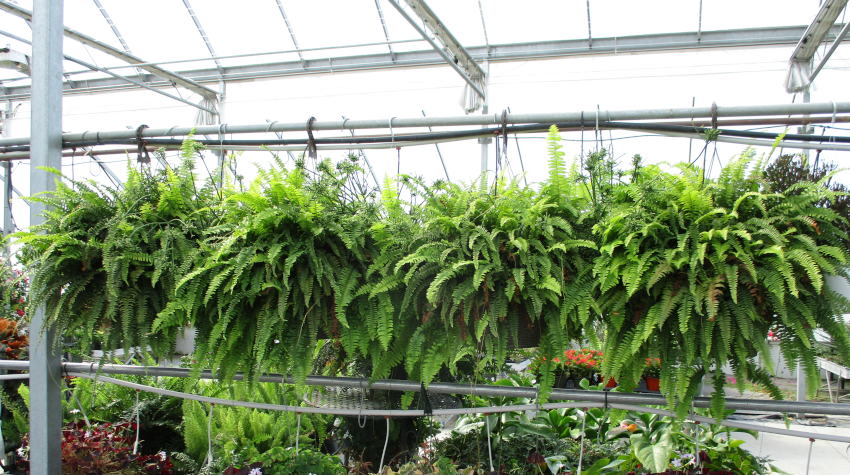There are many different houseplants available and ferns are more diverse than some may expect.
So what makes a fern a fern? Well, the most distinguishing feature of a fern is that it doesn't produce seeds. Instead, ferns multiply using spores that typically appear as brown growths of one type or another under the leaf. It's quite rare that somebody at home would try to propagate ferns at home by spores, but it is an interesting fact.
When keeping ferns in the house, try and think about where they would grow in the wild. Typically ferns are understory plants growing on the cool moist forest floor under old growth trees. Because of this, ferns don't need lots of light in the house, which is a great convenience. What they do need, though, is the moisture and humidity. The most common way of adding humidity is by misting the plant which should be done quite regularly. Another way is to place a saucer of small stones under the fern and keep the saucer topped up with water. As the water evaporates, it creates a small localized area of higher humidity around the fern, making it very happy.
The variety of ferns available is also quite broad. The most common fern is the Boston fern, typically found in hanging baskets. Mainhair ferns and very soft and fluffy to the touch. Asparagus ferns are also very common and resemble the fronds of an Asparagus plant. Birdsnest ferns have thick, almost artificial looking leaves growing from the base resembling a birds nest. My personal favourite is the Staghorn fern which is often mounted on a wooden plaque and hung on the wall. The fronds look like the antlers of a large animal, hence the name. Large basal leaves grow out and cover the base of the plant or the plaque for another interesting look.
If you ask me, a fern is a perfect bathroom plant which will love you every time you have a nice hot steamy shower.

